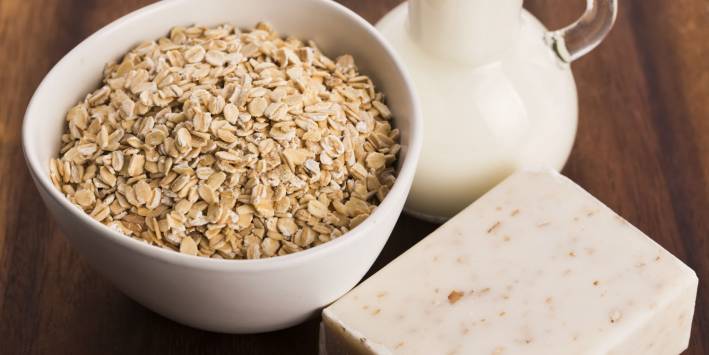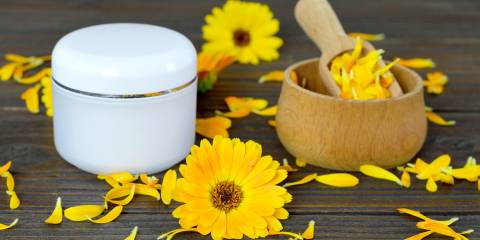Common Rashes and Treatments
-
Contact Dermatitis
Contact dermatitis is a frequently occurring rash caused by direct contact with an offending substance.
In some cases, the reason is obvious because the rash develops quickly. In other instances, it takes detective work to discover the culprit. When the cause isn’t obvious, patch testing or skin biopsies may be needed to determine a diagnosis.
The skin can react to a substance after prolonged or repeated exposure or after just one exposure. Common causes of contact dermatitis include:
- nickel in earrings or other jewelry
- chemicals in rubber gloves, balloons, or garment elastic
- neomycin, a common ingredient in mainstream first-aid ointments
- lanolin (the oil from wool that is widely used as a moisturizer and lubricant)
- ingredients in cosmetics, soaps, or dyes.
Solutions:
- Avoid whatever is causing the reaction along with the common triggers of contact dermatitis, listed above.
- Wash any area that comes in contact with allergic substances.
- Wear cotton gloves under rubber gloves for all wet work.
- Protect the skin with skin-soothing natural salves.
- Avoid long, hot baths, which can dry the skin.
- Use mild laundry soaps.
-
Hot Tub Rash
Hot tub rash is an itchy, tender, bumpy red rash that can create pus-filled blisters around hair follicles—especially on areas covered by swimsuits, which prolong the contact of skin with water contaminated by bacteria.
In most cases, the rash occurs within a few days of swimming in a poorly maintained hot tub or swimming pool.
Solution:
Improved sanitation and maintenance can help prevent the spread of this uncomfortable condition.
-
Swimmer’s Itch
Swimmer’s itch, or Cercarial dermatitis, is produced by an allergic reaction to parasites from infected snails. The parasites are usually found in water birds or aquatic mammals, but they can also burrow into the skin of swimmers.
Found throughout the world, these parasites are most likely to cause swimmer’s itch during summer. Symptoms include tingling, burning, or itching of the skin, small blisters, and small reddish pimples that develop within a few minutes or days of swimming in contaminated water. The itching may last up to a week or more. Frequent exposure increases the rash’s intensity.
Solution:
Thorough towel drying, showering soon after swimming, and staying away from any shallow and marshy water next to the shoreline can help prevent this condition.
-
Diaper Rash
Diaper rash is an all-too common problem in infants. Its cause can be an allergic reaction to the soap used to wash cloth diapers, to some brands of disposable diapers or baby wipes, by prolonged exposure to wet or dirty diapers, or by tight-fitting diapers that rub against the skin.
Solution:
To prevent diaper rash, keep your baby’s diaper area clean, cool, and dry with frequent changing. Air dry infant skin as much as possible, pat your baby dry with a towel instead of scrubbing skin, and avoid creams that contain boric acid, camphor, phenol, methyl salicylate, or benzoin tincture.
Natural Rash Relief
Alternative treatments include oatmeal baths, which relieve itching and irritation. Most natural products stores sell colloidal oatmeal bath products, or you can make your own by finely grinding, boiling, and straining oatmeal water for topical application or for adding to bath water. Oatmeal’s phenols provide antioxidant and anti-inflammatory activity.
Salves and other preparations containing skin-soothing herbs like calendula, St. John’s wort, chamomile, and comfrey help speed healing, remove redness, reduce inflammation, and alleviate itching.
Note that oil-based salves are not recommended for poison ivy, because they can spread the plant’s irritating compounds.
Tea tree oil can be applied topically full-strength or as a wash to poison ivy and other rashes.
Another all-purpose rash healer is green clay, which can be mixed with water or herb tea (like chamomile or calendula) and applied as needed.
When to Call a Doctor
Any rash that lasts more than a week, gets worse despite treatment, or is accompanied by other symptoms like fever needs professional evaluation.
Chickenpox (small round blister like pimples that crust over) and measles (a raised red rash) are common among children but can also strike adults.
Outcroppings of tiny, very painful blisters (often accompanied by flu like symptoms) in older adults may be shingles.
Increasingly common, Lyme disease often begins with a red, circular lesion that may be followed by a rash of small raised bumps on the torso and often by flu like symptoms. Even meningococcal disease and mononucleosis can begin with a rash.





